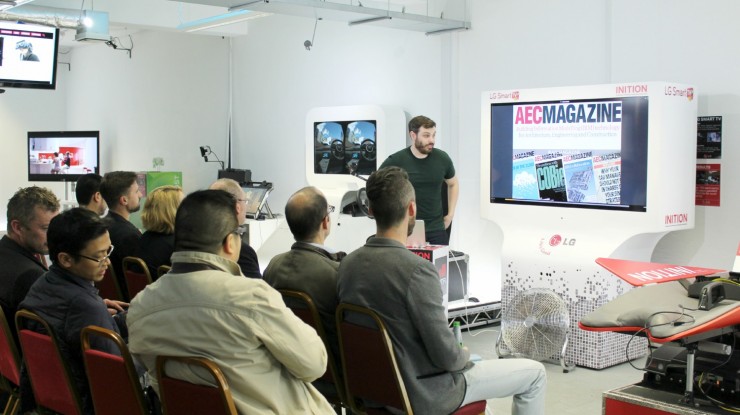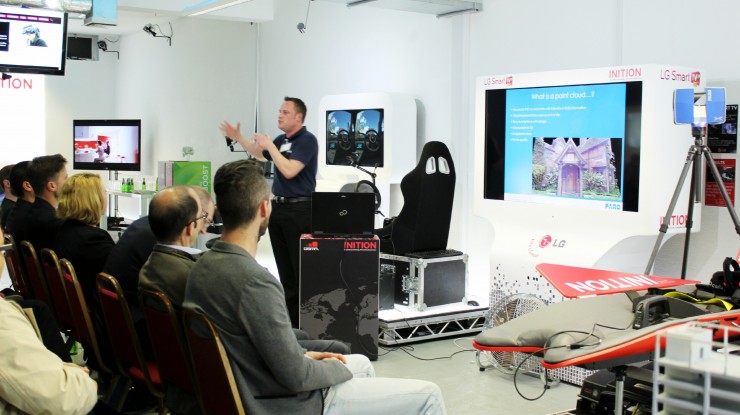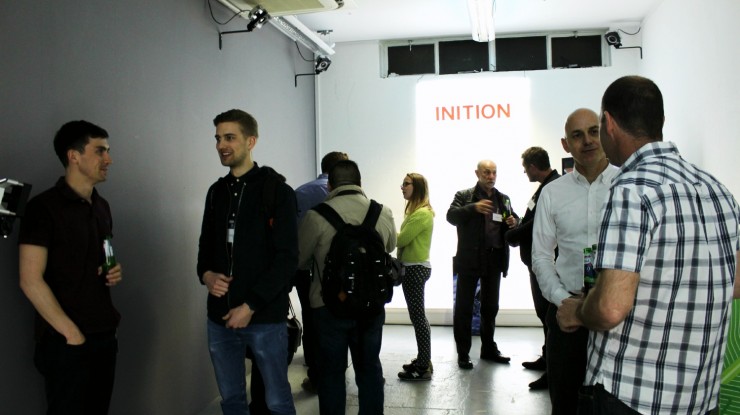We recently turned our industry focus towards the Architecture, Engineering and Construction sectors to explore how emerging technologies – like 3D printing, 3D scanning, augmented and virtual reality – can be leveraged to improve processes, delivery of information and heighten creativity in the future.
We’ve put a round-up of our guest speakers’ talks together, highlighting the best of each.
Stephen Holmes, Develop3D
// 3D printing and the potential for future creativity
The adoption of 3D printing within the architectural sector continues to grow, currently either complementing or replacing existing traditional modelmaking processes and facilities. Traditional modelmakers haven’t died out, but instead have been brought in-house or have expanded their services to include 3D printing.
Although the technology is currently limited to modelmaking applications (with the exception of a few mavericks using 3D printing to actually produce structural buildings like those in China), there is huge potential for it to improve workflow and increase levels of creativity.
When used in conjunction with other technologies like augmented reality, 3D printed models are suddenly transformed from static objects into something far more interactive and visually interesting. In this sense, they could be used to help win pitches, improve award submissions or simply elevate client meetings.
The ‘tech trinity’ of 3D printing, cloud computing and robotics is going to change the way we think about designing buildings but don’t assume that bringing the technology in-house is automatically the best option – a good outside bureau can provide more than just the tools/outcome, but also creative expertise and advice.
In terms of the future of the technology, we’ll continue to see improvements in processes and materials, with newer generation 3D printers resulting in shorter print times whilst embracing the different properties and strengths of newly released materials.
3D printing will also continue to move strictly from modelmaking space into the growth of more ambitious, ‘scaled-up’ structural projects.
It may not necessarily revolutionise the sector, but will offer architects and builders a new, and potentially a more efficient and creative way, of doing what’s already being done. It’s a promising future, for sure.
Dave Southam, FARO
// 3D Scanning and the importance of accuracy
Current capabilities of 3D scanning could, if not revolutionise, hugely increase the efficiency of processes within the AEC sectors. Southam broke them down into the following scenarios:
- The data that 3D scanning systems are capable of amassing guarantees an accurate visual representation of all the intricacies and details of a structure – particularly important when relating to heritage properties
- This also ensures any refurbishments or renovation plans for such properties aren’t compromised by lack of detail or accuracy
- A 3D scan – i.e. a visual representation of a site / area usually referred to as a ‘pointcloud’ – can be used to assist with the design / development process through to the construction stage
- Continual scans throughout this stage usually guarantee any errors can be identified and rectified early before they become expensive ‘showstoppers’ – potentially even redesigning where necessary
- Scan data can, in some instances, be shared via ‘web share’ without the need for software, a convenience that could assist even those outside of the AEC sector
- Measurements can be taken from the scan data to ascertain requirements for tiling/flooring etc which would cut down on the number of site visits required, potentially reducing the cost of construction / maintenance
- For the future, 3D scanners could be attached to drones and used to assist with town planning / city redevelopments. Currently, a scan of this type would occupy an overwhelming amount of data storage and is, at this stage, unfeasible but could be used when the technology improves
Jay Short, 3D Technology Consultant at INITION
There is little doubt that technology is playing an increasing role in the way that the AEC sector carries out its day to day business. There is an increasing awareness in the value that 3D printing can add to the way that companies present their ideas for development and redevelopment, as well as it being a means of demonstrating technical information for engineers in a tangible manner. However, as this awareness increases, the potential value as a means of obtaining competitive advantage decreases.
As a result, alternative technologies are being explored as a means of demonstrating technical information or increasing client engagement. The likes of augmented and virtual reality, as well as other display solutions are being used either as an alternative to, or in some cases as a supplement to a physical model.
In terms of the future, it is very unlikely that one single technology is going to succeed at the expense of others. More likely, in the near future, you will initially begin to see a drive by the forward thinking companies to begin to research these technologies and begin to understand how they may fit into their workflows. The most successful companies will be those who make this research a key part of their plans for the future and understand the true potential value of these technologies, in order to allow them to establish where they can be integrated into their workflow processes.
We are past the time where the use of the likes of 3D printing and augmented reality alone is enough to impress a bid panel. The opportunity now exists for companies to use these innovations intelligently and in a manner that will create true competitive advantage, rather than purely being a use of technology for technology’s sake.






